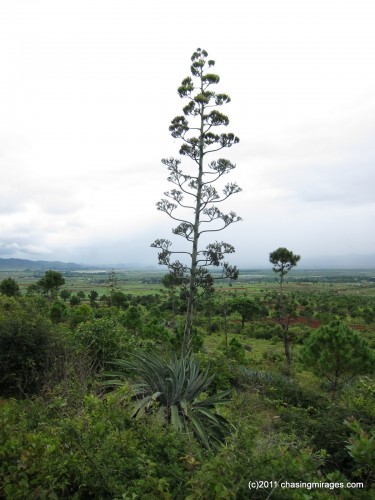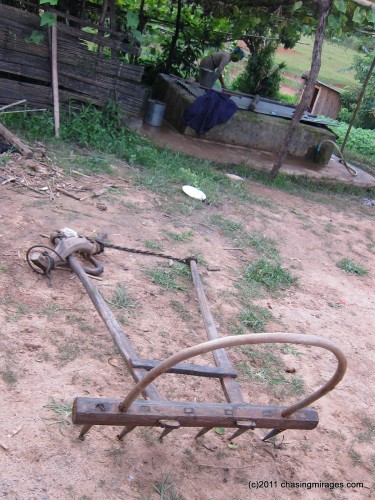As beautiful as it is, Kalaw is not without its environmental problems. The locals depend on agriculture for their livelihood, and sadly, farming practices here are far from sustainable. Â As recently as 30 years ago, tigers could still be hunted in this area. Â Now there are none left. Â The remaining “Reserve Forest” has only been protected because an important water reservoir is located within it. Â This tiny patch of protected forest covers less than a single mountaintop, not enough land area to support even one large predator.
Are things looking up?  On balance, probably not.  One positive development is that family planning programs combined with healthcare aid from international organizations have successfully convinced most families to stop after having three children.  However, from what I could see, the government is doing very little big-picture resource planning to prevent the tragedy of the commons, and primary education is still a luxury.  My suggestion: spend less on weapons and wedding jewelry and more on improving the quality of citizens’ lives.
Organic farming has been largely abandoned by local farmers.  Farmers with Ghostbuster pesticide backpacks are ubiquitous, and, according to the trekking guide, almost all vegetables planted for market are genetically modified, grown from seeds provided by China.  My conspiracy-obsessed mind suspects that China is using Myanmar as a huge laboratory for testing the long-term effects of GM crops on human health.  Then again, why use Myanmar when China has about a billion of its own peasants on which to experiment?
One bright spot is that the locals seem to be at least superficially aware of the dangers of messing with nature. Â The rice raised for local consumption, claimed our guide, is still grown using traditional strains and traditional methods.
British colonialization has left permanent marks in Kalaw’s ecology. Â Up to 80% of the flora currently growing in the region was introduced by the British. Â The invasive species that first caught my eye was this one:

those distinctive greenish-grey spikes are hard to miss, not to mention the huge blooming agave penis
Agave grows here like a weed, larger and more numerous than I’ve ever seen in west Texas. Â It was introduced by the British for ornamentation and natural fencing, but now it is a costly, unsightly pest. Â As soon as Myanmar opens up, let’s go in there and exploit these spiky monsters. Â Rum and whiskey are already big hits in Myanmar, why not tequila??
One sight that lifted my spirits was this solar panel in the tiny mountain village where we spent the night.
The funny thing was that most of the juice from this solar panel flowed straight into this generator of noise pollution:






March 28, 2012 at 00:20
Thank you for your blog. Words will fail to express my connection with this place where I was born. I’m happy that you were there and sad at what has been lost.